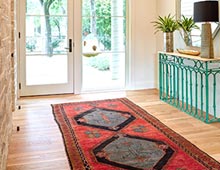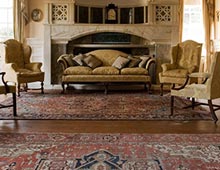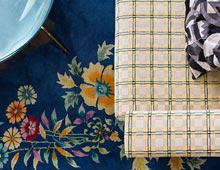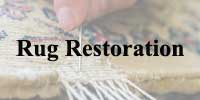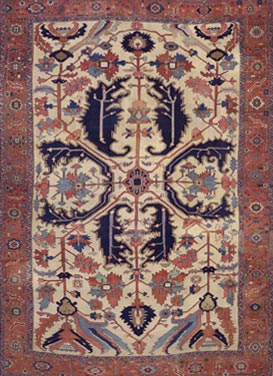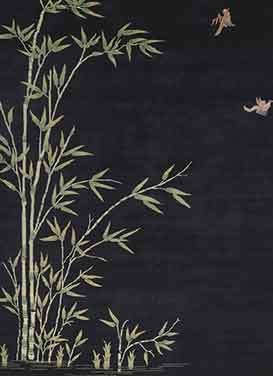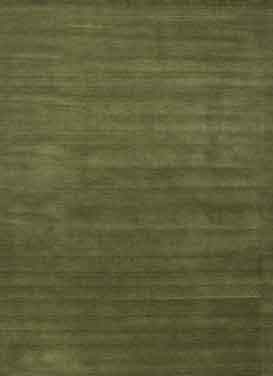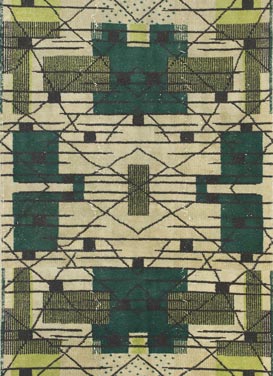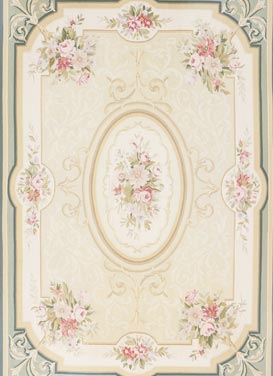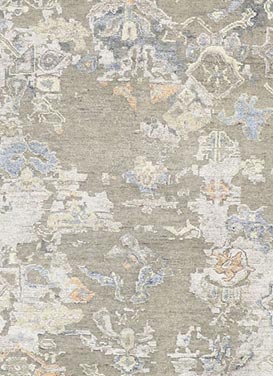Prayer Rugs
 Prayer Rugs | Sajjadat Salat
Prayer Rugs | Sajjadat Salat
Shop Esmaili's Prayer Rug Collection in Dallas!
Prayer rugs are special carpets or mats used by Muslims for the purpose of performing their prayers, known as Salah or Salat. These rugs are designed to provide a clean and comfortable surface for Muslims to kneel and prostrate while praying. The use of a prayer rug is not obligatory in Islam, but it is a common practice among Muslims to use one to ensure that the area where they pray is clean.
Prayer rugs typically have a specific design with a niche, called a mihrab, pointing towards the Kaaba in Mecca, which is the holiest site in Islam. This helps worshippers align themselves correctly during their prayers. Additionally, prayer rugs often feature other decorative elements, such as geometric patterns, floral designs, or calligraphy with verses from the Quran.
These rugs come in various sizes and materials, and they are portable, allowing Muslims to carry them wherever they go for prayer. While prayer rugs are commonly associated with Islamic culture and religious practices, they are not exclusive to Islam, as other religious traditions may also use similar items for prayer or meditation.
Prayer Rug Characteristics
Prayer rugs typically have several distinct characteristics that make them suitable for use during Islamic prayers:
- Design and Mihrab: A prominent feature of prayer rugs is the presence of a mihrab, a niche or arch design, on one end of the rug. The mihrab is oriented towards the Kaaba in Mecca, which is the holiest site in Islam. This helps guide the worshipper in the proper direction during prayers.
- Size and Shape: Prayer rugs come in various sizes, but they are often designed to be large enough for an individual to comfortably perform the different physical postures of the prayer ritual. They are typically rectangular or square in shape.
- Materials: Prayer rugs are made from a variety of materials, including wool, cotton, silk, or a combination of these. The choice of material can affect the rug's durability, softness, and overall quality.
- Pile and Texture: Some prayer rugs have a pile, which refers to the surface texture of the rug. The pile can be short or tall, and the texture may vary, providing a tactile experience for the worshipper.
- Decoration and Patterns: Prayer rugs often feature decorative elements such as geometric patterns, floral designs, or intricate motifs. These designs may have cultural and regional variations, reflecting the diversity of Islamic art and traditions.
- Portability: Prayer rugs are designed to be portable, allowing individuals to easily carry them to mosques or use them in various locations for prayers. They are lightweight and foldable, making them convenient for travel.
- Cleanliness and Purity: The use of a prayer rug is associated with the Islamic emphasis on cleanliness during prayers. Using a prayer rug provides a clean and dedicated space for the worshipper to perform their prayers, ensuring that the area is free from impurities.
It's important to note that while these characteristics are common, there can be variations in the design and features of prayer rugs based on cultural, regional, and personal preferences.
Where are prayer rugs from?
Prayer rugs have a long history and are associated with Islamic cultures around the world. The origin of prayer rugs can be traced back to various regions and cultures within the Islamic world. Different styles, designs, and materials have evolved over the centuries, reflecting the diverse artistic traditions and influences of the Muslim communities.
Some notable regions with a strong tradition of producing prayer rugs include:
1. Persian/Iranian: Persian prayer rugs are renowned for their intricate designs, rich colors, and detailed patterns. Cities such as Kashan, Tabriz, and Isfahan in Iran have been historical centers for the production of high-quality prayer rugs.
2. Turkish/Anatolian: Turkey has a rich tradition of weaving prayer rugs, known for their geometric patterns and bold colors. Turkish prayer rugs often feature unique designs, and regions like Konya and Hereke are famous for their contributions to rug making.
3. Central Asian: Countries in Central Asia, including Afghanistan, Turkmenistan, and Uzbekistan, have a tradition of producing prayer rugs with distinctive tribal designs. These rugs often feature geometric patterns and vibrant colors.
4. North African/Maghreb: Countries in North Africa, such as Morocco and Algeria, also have their styles of prayer rugs. Moroccan rugs, for example, may feature geometric patterns and earthy tones.
5. Indian/Subcontinental: India has a long history of carpet weaving, and regions like Kashmir are known for producing prayer rugs with intricate designs and high-quality craftsmanship.
6. Caucasian: The Caucasus region, including countries like Azerbaijan and Georgia, has its unique style of prayer rugs characterized by bold colors, tribal patterns, and intricate detailing.
It's important to note that the production of prayer rugs is not limited to these regions, and various Muslim communities around the world contribute to the diversity of styles and designs. Additionally, with globalization and modern manufacturing techniques, prayer rugs are now produced in many places, incorporating contemporary designs and materials while still adhering to the essential characteristics that make them suitable for Islamic prayers.

